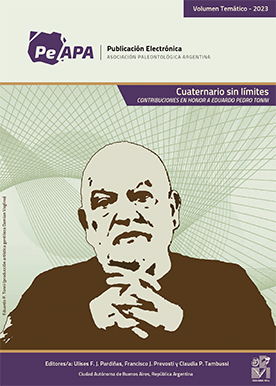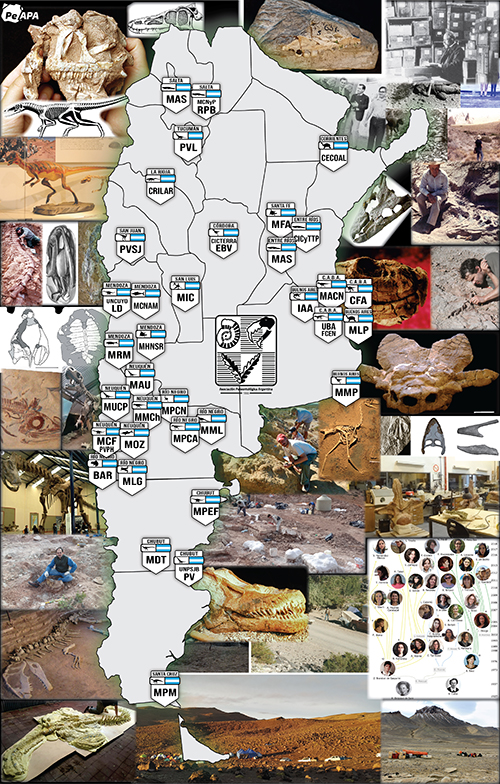TRAZAS FOSILES EN BARRAS SUBMAREALES DE LA FORMACION BALCARCE (CAMBRICO/ORDOVlCICO), CABO CORRIENTES, MAR DEL PLATA, ARGENTINA
Abstract
Cambrian/Ordovician trace fossil assemblages from the Balcarce Formation are described. In the Cabo Corrientes outcrops at the Atlantic coast, four sedimentary facies are distinguished as follows: a) Pebble Sandstone Facies with progradation surfaces and no evidence of bioturbation; b) Crossbedded Sandstone Facies in tabular and lenticular sand bodies with rare Palaeophycns isp.; c) Heterolithic Facies with wavy bedding bearing Daedalus labeckei, Herradurichnus scagliai, Rusophycus isp., Scolicia isp., and Teichichnus isp.; and d) Sandy Heterolithic Facies with Herradurichnus scagliai and Scolicia isp. This sedimentary succession is considered here as interbar, bar margin, and central bar facies in a subtidal environment on an open marine shelf. Ethologically, two principal trace fossil assemblages are recognised. Both assemblages are closely associated with sedimentary facies and specific colonising events may be distinguished. The first assemblage consists of Rusophycus isp. and Herradurichnus scagliai, which occur as furrows on the substrate at the water-sediment interface. The second one is composed of Daedalus labeckei, Scolicia isp. and Teichichnus isp., which are post-depositional burrows developed a few centimeters below the sediment surface by sediment feeding organisms. From this study, the palaeoenvironmental history of the bioturbation of this shelf bar deposit can be summarised. Firstly synsedimentary ichnofossils developed in interbar and bar margin heterolithic deposits. Secondly, these deposits were buried by vertical accretion of migrating sand waves, and then mud feeding organisms started working below the sediment surface living on the available nutrients in the wavy bedded heterolithic facies. Simultaneously, in the overlying new interbar and bar margin facies similar syndepositational traces were developed.KEY WORDS. Trace Fossils. Sedimentary Facies. Shallow Marine Deposits. Cambrian-Ordovician. Balcarce Formation. Tandilia. Argentina.
Downloads
Published
Issue
Section
License

Authors retain copyright and grant the journal right of first publication with the work simultaneously licensed under a CC Attribution-NonCommercial 4.0 that allows others to share the work with an acknowledgement of the work's authorship and initial publication in this journal.






















